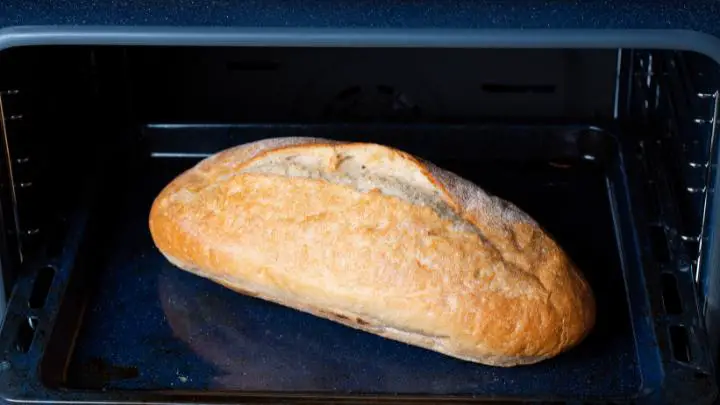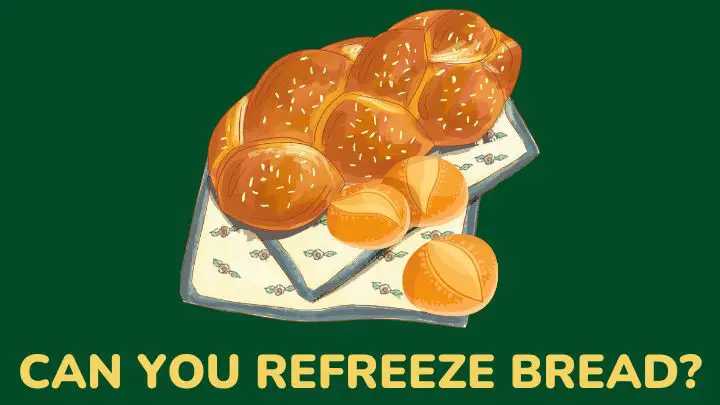Can you refreeze bread?
Keeping bread in the freezer is the best way to keep it fresh long-term. The possibility of refreezing a loaf of bread after thawing or taking from it is one of the list of popular questions on bread.
No one wants to see the efforts they put into baking and storing bread evaporate in one day. If you have thawed an entire loaf but won’t be needing all of it, do not worry. You won’t be losing the rest.
You can refreeze the loaf and use it another day. However, there are some buts to this and you should know them.
When it comes to storing food in the freezer, there is the right way to go about it, so you do not lose the quality of the food item.
Can you refreeze bread?
You can refreeze bread within 48 hours of taking it out of the freezer. However, there are conditions to do this. First, do not keep bread in the freezer longer than 3 to 6 months. The longer you freeze bread, the more quality you lose.
If you must refreeze bread, do not allow it to thaw completely before returning it to the freezer. Exposing frozen bread to the elements exposes it to microbial activity and condensation which can alter its taste and flavor.
Refreezing bread will make it drier and unappetizing. But if do not mind this, you can go ahead to keep your bread in the freezer for another set of weeks. But bread like sourdough and banana bread do not freeze well and will not do well with refreezing either.
Bread that contains eggs and gluten holds up to freezing better than bread with yeast. Eggs help to keep moisture locked within the loaf and gluten helps to preserve the texture of the bread.
Overall, if you plan to freeze and refreeze your bread, do not expect it to have all its fresh flavors and texture. The more you refreeze, the staler your bread tastes.
Can you refreeze bread dough?
You can refreeze bread dough to bake it later. The bread will be safe to eat but it would have lost most of its moisture and elasticity in the process of thawing and refreezing. As a result, the bread will be harder, and the dough will not rise much.
How long is bread good for after refreezing it?
Once you thaw your loaf of bread and you are not going to refreeze it, consume it immediately or within 24 hours. Also, do not refreeze bread for longer than three months to retain its quality.
Will refreezing bread make it go bad?
Refreezing bread will not make it go bad in terms of spoilage, but it will compromise its quality. If you don’t mind drier bread with compromised flavor, you have nothing to lose.
Also, if the bread tastes too stale, you can put it to use in other ways like making breadcrumbs, toast, bruschetta, bread croutons, bread pudding, or bread soup.
How do you know frozen bread is bad?
The bread is hard
Hard bread does not always indicate that it has gone off. Hardness could be a sign of retrogradation – a sign that the starch is recrystallizing. You may have to taste a little or smell it for other signs of spoilage.
If the bread is rock hard even after heating it in the oven, you should trash it. If it is not too hard and doesn’t smell or taste off, transform it into croutons or cut it into cubes and add them to soups or sauces.
Freezer burn
Bread with freezer burns is not as bad as bad enough to cause food poisoning but they are not appetizing either. They do not make great breakfasts.
The best way to salvage such bread is to repurpose it for breadcrumbs and croutons or cut it into cubes for other recipes.
Awful taste and smell
Another tell-tale sign that frozen bread has gone off is an off taste. If the bread tastes sour or anything unpleasant, discard it. Do not try to save it up for repurposing. The bad taste will affect any dish it comes in contact with.
Also, if the bread smells like vinegar, yeast, or alcohol, it is no use. Trash it.
Mold growth
Mold growth in the freezer is a result of dirty freezer or spilled food that stained the bread. This is why you should keep foods apart in the freezer. After unwrapping frozen bread, examine it for mold growth. Do not try to salvage it. Trash it immediately.
How to thaw frozen bread correctly

In the refrigerator
This method is slow but productive. The temperature in the refrigerator slowly brings your bread from frozen to cold.
Leave the bread in its wrap and place it in the refrigerator overnight. While the bread thaws, it reabsorbs the melting ice crystals without becoming soggy.
At room temperature
Cover the frozen bread – loaves or slices – and leave it on the kitchen counter. Depending on the size and thickness of the bread, it should anywhere from 20 to 40 minutes to thaw. You are thawing until it is cold and no longer frozen.
Also, do not allow water to come in contact with the bread while it thaws. Otherwise, you could end up with soggy bread instead.
With a toaster
Using a toaster is easy and quicker than thawing at room temperature. It is a good method that comes in handy if you need the bread for breakfast. The bread will come out warm and tasty with just a few minutes of heat.
With a microwave
Another way to thaw frozen bread is by microwaving it. This is the fastest of the three methods. Take the bread directly from the freezer and microwave it on high heat for 15-60 minutes. The time depends on the size and thickness of the bread.
Microwaving frozen bread makes it wet and limp. If you need your bread dry and firm, you probably shouldn’t use this method.
How to refreeze bread correctly
You can refreeze whole loaves or bread slices. Refreezing slices of bread is not always advisable because bread slices are more prone to dehydration and becoming dry. However, if you will need the bread in slices in the future, it is the way to go.
Store-bought bread may come in slices, or you may cut whole loaves into slices for easy use like spreading butter or mayo. It is easier to thaw bread slices than loaves. So, if you thawed more bread than you need, here’s what to do:
- Allow the bread to thaw completely. You can leave it to thaw at room temperature, or thaw it with a toaster or microwave
- If you warmed the bread before realizing that you do not need it, allow it to cool completely and come to room temperature
- You can work with whole loaves or cut a loaf into two. If you have slices, share them in smaller batches
- Tightly wrap each portion of bread in a freezer-safe plastic wrap. The airtight wraps will help to keep out air and prevent freezer burn
- Double-proof each portion with heavy-duty aluminum foil or a freezer bag
- Afterward, label each pack of bread. Place them at the back of the bottom shelf of the freezer
- Make sure you consume the bread within three months. For best quality, do not thaw and refreeze the bread
- Most importantly, ensure that you are refreezing bread within 48 hours of thawing it
What to do with thawed stale bread
- Make bread and butter pudding
- Make breadcrumbs for casseroles like mac and cheese
- Transform stale bread into croutons
- Try out chocolate bread pudding
- Cut the bread into cubes for soup, sauce or to use as stuffing
- Mix it with veggies and make crusty bread salad – Panzanella
- Make French toast for breakfast
- How about a breadcake?
- Stale bread heats up well for bruschetta and burgers
- Add stale bread to your meatloaf
- Crumble the bread and make bread soup
FAQs
Does refreezing bread affect its nutritional value?
Refreezing bread affects its texture and flavor, not its nutritional value. Fresh, frozen, thawed, and refrozen bread have the same nutritional value. However, toasting thawed bread tends to reduce its glycemic index and its impact on blood sugar levels.
Can you refreeze bagels?
You can refreeze bagels within 24 hours of thawing them. But you should not expect the same quality as when they were fresh. Freezing, thawing, and refreezing bagels again make them drier and impart their flavor.
What types of bread are most suitable for freezing and refreezing?
The best types of bread for freezing and refreezing are bread that contains eggs such as brioche and challah, gluten-free bread, store-bought varieties, white bread, whole wheat bread, homemade bread, and bread with seeds.
Sourdough, banana bread, and other types of bread that contain yeast do not freeze well. Refreezing them will ruin their texture and negatively affect their quality.
Can you freeze different types of bread together?
You can freeze different types of bread together in one big freezer bag. Wrap each type in small loaves or in slices of 4 or 5 with plastic wrap. Keeping them in different wraps helps to keep flavors from mixing and altering their tastes.
Conclusion
It won’t hurt to refreeze a loaf of bread you just took out of the freezer. However, you must be sure that it hasn’t been out for up to 48 hours. Also, the bread must have been kept uninterruptedly frozen in an airtight wrap and away from odorous foods.
While you can refreeze again and again, it is not advisable. Exposing previously frozen bread to room temperature (after thawing) could compromise its taste and texture. The bread will become stale, dry, and unappetizing. So, it’s best you refreeze just once or twice.
Finally, see the best ways to store sourdough and banana bread to prevent staling and spoilage since they do not hold well with freezing and refreezing.
Thanks for reading.
